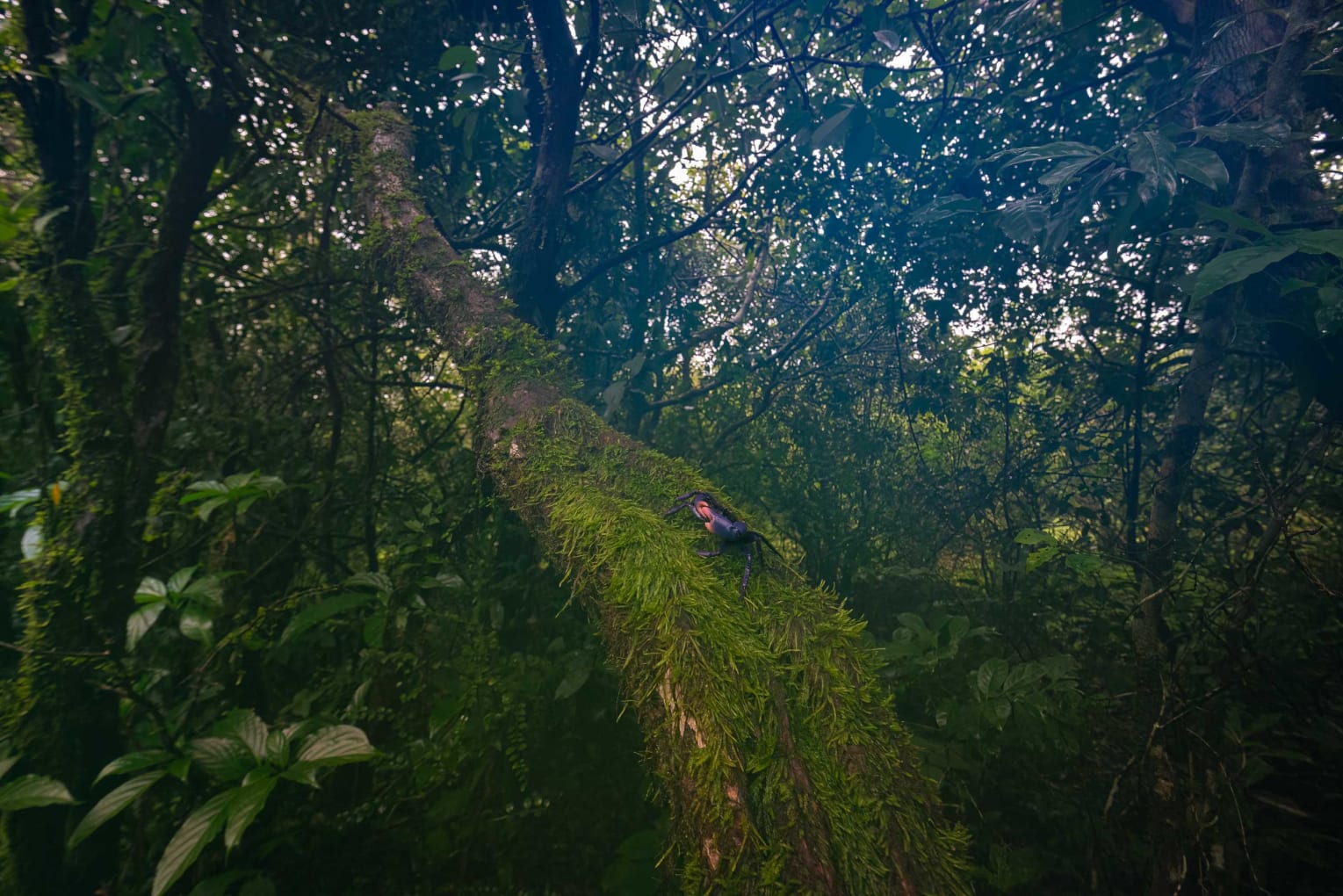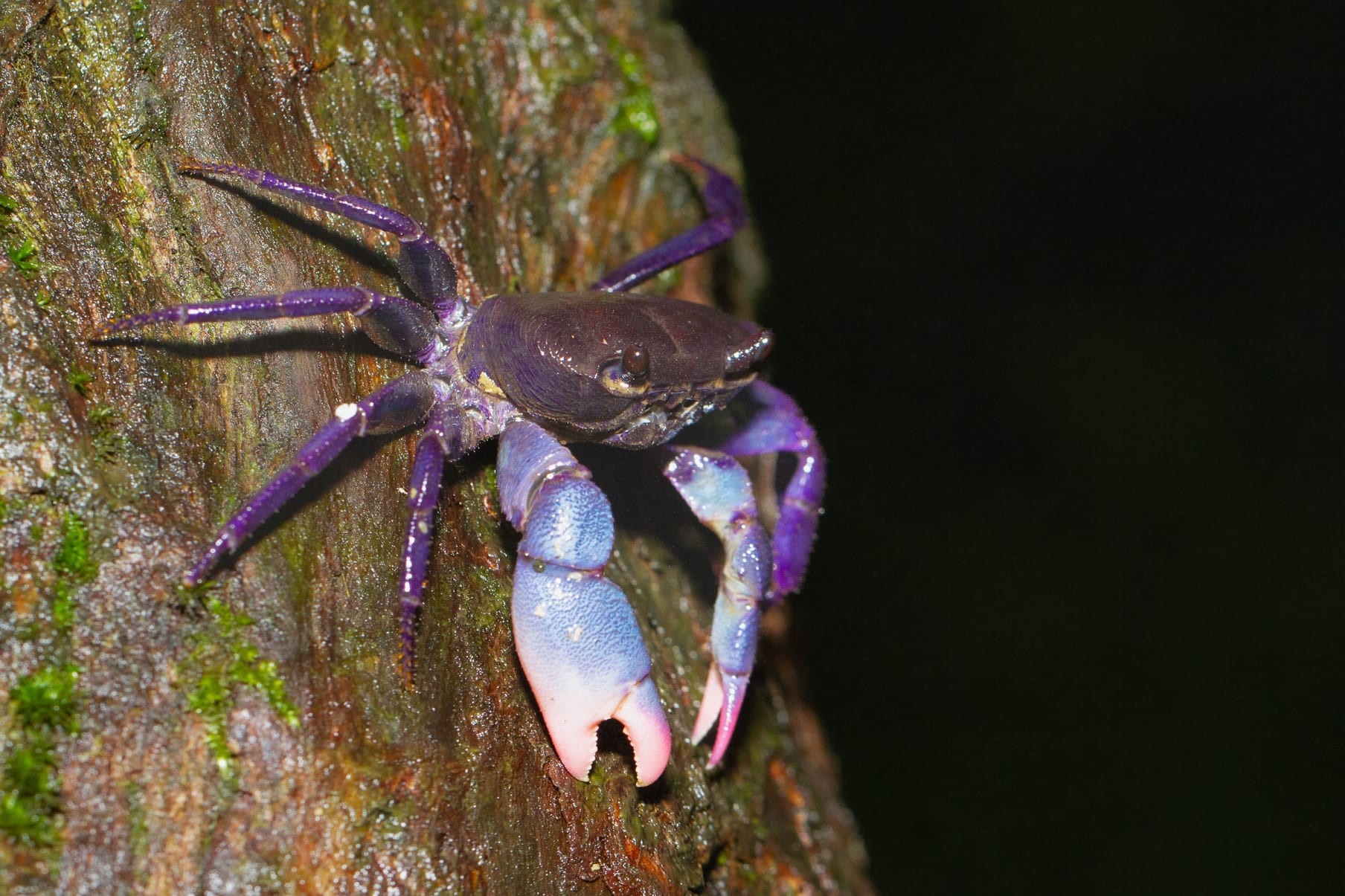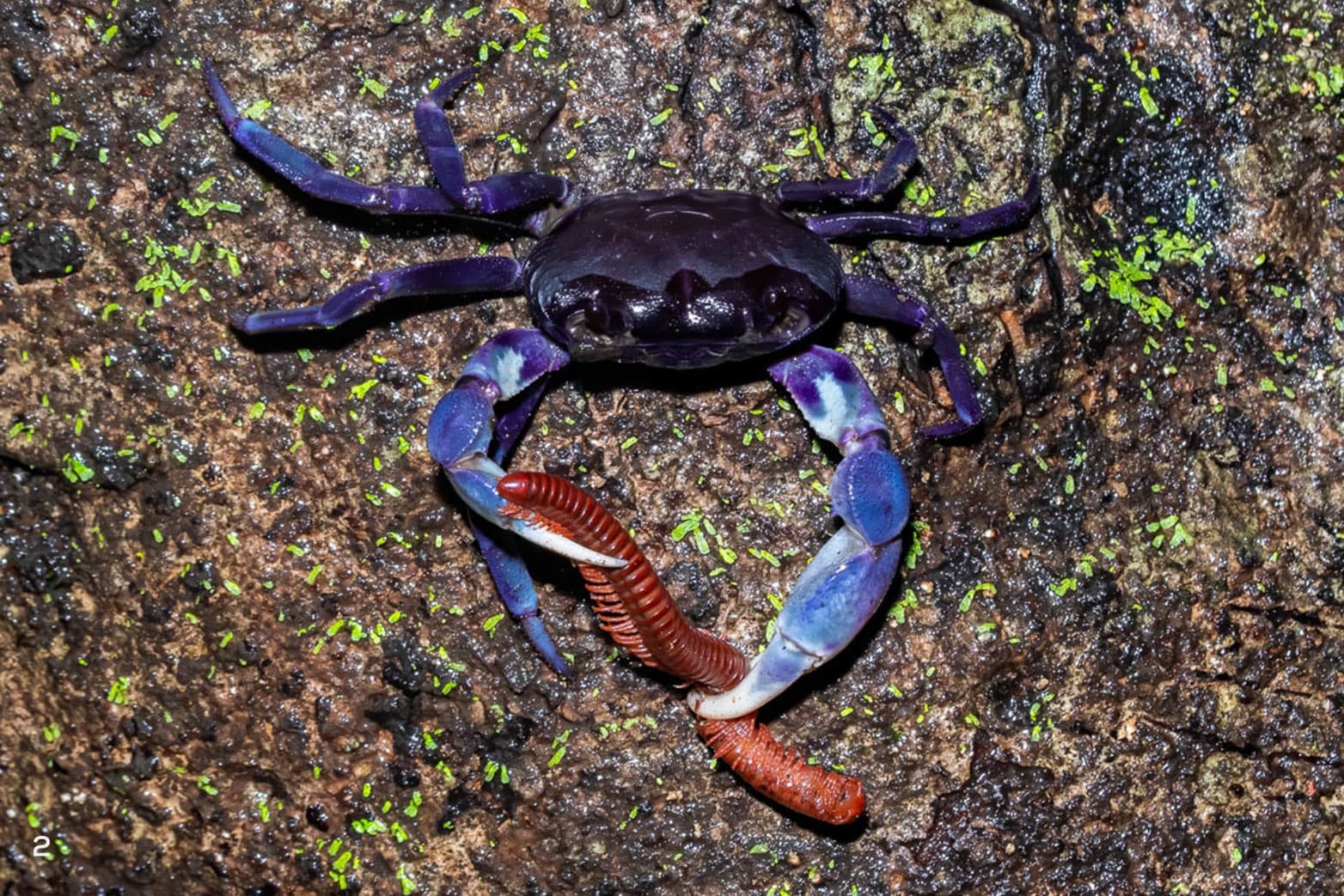 Listen to this article
•
15:34 min
Listen to this article
•
15:34 min
I didn’t expect to fall for a crab.
Crabs, in my head, were beach creatures. They belonged to sandcastles, salty air, sideways walks, and maybe the occasional seafood platter (don’t judge me). But this story? It doesn’t begin at the sea. It begins somewhere much higher. Somewhere wetter. Somewhere wilder.
It begins in Amboli.
Amboli is nestled in the northern Western Ghats of Maharashtra. It’s the kind of place where rain doesn’t just fall — it takes over. You don’t walk through the forest; you slosh through it. Leeches throw raves in your socks. The air hums with the sounds of dripping leaves, frog calls, and the occasional motorbike trying to survive a slippery ghat road.
I was here chasing dancing frogs and pit vipers. But what I found was something stranger. Someone whispered about it casually while we ducked under a tree during a sudden downpour:
“Did you hear about the purple forest crab?”
Excuse me?
Purple. Forest. Crab.
Those three words sounded like they belonged to different ecosystems, possibly different continents. But here in the middle of the ghats, where clouds kiss treetops and the ground is always damp, lived a creature that made all three words come together — Ghatiana atropurpurea, the Amboli purple forest crab. And yes, it’s as fabulous as it sounds.

Cover Photo: Zhayynn James
The Forest’s Best-Kept Secret
This crab isn’t shy. At least not in terms of its looks. Imagine the deepest shade of jamun purple, legs dipped in ink, and a carapace that glistens like it’s been polished for a ball. With a shell width of about 5 cm, it’s like a striking, regal robe. One of its most distinct features, particularly in males, is that one claw is significantly larger than the other.
And yes, it scuttles into a tree.
This isn’t your average sideways-walking beach crab. The Amboli purple forest crab is partially arboreal. It has been found nesting inside the hollows of rain-filled tree trunks, especially those of the jamun or Indian blackberry tree (Syzygium cumini), up to 2.4 metres off the ground. That’s higher than most people expect crabs to ever go. Frankly, it’s higher than most people can climb on a tree after one vada pav and a long hike.
When not climbing, it can be found on the forest floor, amongst leaf litter and in rock crevices. Juveniles, in particular, tend to stay closer to the ground.
Adults are often observed alone, hiding inside these natural water bowls, chilling in their monsoon pools like mysterious forest aristocrats.
And here’s the kicker: they were only formally described by scientists in 2016. Let that sink in. An entire species, dressed like royalty, living in trees, went scientifically unnoticed until recently. It makes you wonder how many creatures we walk past every day, blind to the wonder.
Why purple?
We don’t really know.
It could be camouflage — tree hollows tend to be dark, and a deep violet shell might blend better than you think. Given its preference for jamun trees, some wonder if its colour mimics the tree’s famous purple fruit. It could be a warning colouration: “Don’t eat me, I taste weird”. Or maybe it’s just evolution flexing. Maybe purple means nothing at all. Not every trait has a neat functional explanation. But here’s what we do know: no two individuals look exactly the same. Some lean toward a richer purple. Others sport a maroon or reddish tint. The limbs, the claws, the eyes, they shimmer differently under shifting light.
It’s the kind of creature you’d expect to see in a Studio Ghibli film. Too whimsical to be real. And yet, there it is. Living in rainwater, crawling through mist, practically invisible until it moves — and even then, only if you’re paying attention.

Life in a tree hole
Many animals are habitat specialists. But this crab? It’s hyper-specific. Its preferred living space is a tree cavity filled with rainwater. Think of it as a micro-pond, suspended above ground. It climbs into these crevices, which offer a safe refuge from ground predators and may even serve as breeding sites. Although, like most things with this crab, we’re still learning.
Adults are most commonly seen during the monsoon season, typically late in the day or early evening. One individual was found eating a millipede. Another? Found chillin’ in a roadside pond full of tadpoles. Their diet is likely omnivorous and opportunistic — dead invertebrates, maybe some decaying plant matter, a little frog egg sushi if it’s feeling fancy. They have been observed eating millipedes, snails, and even roadkill.
Though the IUCN Red List has not yet assessed its conservation status its reliance on a specific habitat makes it important.
A Crab That Climbs is a Crab That’s at Risk
Ghatiana atropurpurea is currently known from a handful of locations in the northern and central Western Ghats, including Amboli, Amba Ghat, and the Sharavati Valley — all shrinking habitats. Its arboreal tree-hole lifestyle makes it hyper-vulnerable to deforestation. You cut one tree, and you don’t just lose a plant. You may erase an entire crab household. Combine that with tourism-driven road widening, illegal firewood collection, and landslides, and you get a habitat that’s crumbling.
Add in the usual villain: climate change. Erratic monsoon cycles mess with its delicate microhabitats. Tree cavities don’t fill as expected. Rain doesn’t fall when needed. The entire ecological rhythm stumbles, and with it, the species that depend on it.
And the worst part? It’s not even on most conservationists’ radar. Crabs don’t sell headlines. They don’t get international funding. But they matter. Small doesn’t mean insignificant. In fact, the smaller it is, the more we risk losing it before we even understand what we had.
An opportunistic omnivore, the Amboli purple forest crab’s diet is still largely a mystery. It has been observed feeding on invertebrates like millipedes, and is known to inhabit ponds full of potential prey like tadpoles, suggesting it eats whatever its unique, arboreal microhabitat provides. Photos: (1) Shreeram MV, (2) © Uday Agashe, CC BY-NC
The Forest Isn’t Quiet. We Just Don’t Listen.
I remember standing on a trail in Amboli, the rain picking up, the leeches celebrating with renewed enthusiasm. Someone had pointed to a tree and whispered, “It’s in there.” I squinted. Nothing. Then a glint of purple. Just for a second. And gone.
That moment hit me harder than I expected. This creature had been living quietly, elegantly, unseen for who knows how long. It didn’t need attention. It didn’t demand awareness. It was just being. And we, the loud, stomping, road-building species, almost missed it.
That’s what Amboli reminded me of: there’s so much we don’t know and will never know if we don’t stop, look, and care. Every tree cavity could be a kingdom. Every purple shimmer, a story.
Why This Story Matters
We live in a time where extinction isn’t rare — it’s routine.
Species vanish before they’re named. Before they’re studied. Before they’re felt. And in a world obsessed with megafauna — tigers, elephants, rhinos — we forget that ecosystems are held together by threads. Tiny ones. Crabs, frogs, beetles, fungi.
Ghatiana atropurpurea isn’t just a crab. It’s a reminder that biodiversity isn’t always charismatic. Sometimes it’s quiet. Elusive. Hidden in a tree. Painted in colours too strange for logic. But it matters. Because when the crabs vanish, the forests could unravel. And when the forests unravel, so does everything else; every time a thread is broken, the web of life weakens.
I walked into Amboli’s forests looking for frogs and snakes. I found a crab instead. A purple one. A forest-dwelling, rainwater-loving, secretive one. And in that brief encounter with rain on my face, mud in my boots, and a shimmer in the dark, I found something rare: Wonder.
That’s the real conservation crisis. Not just habitat loss, or extinction rates, or data deficiency. It’s the slow erosion of wonder. Of losing the capacity to be stunned. To feel awe. So, here’s to the Amboli purple forest crab. May it live long. May we protect its trees. And may we never forget to look up — even for crabs.








